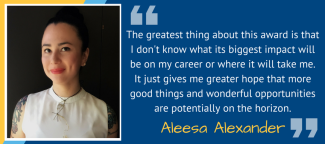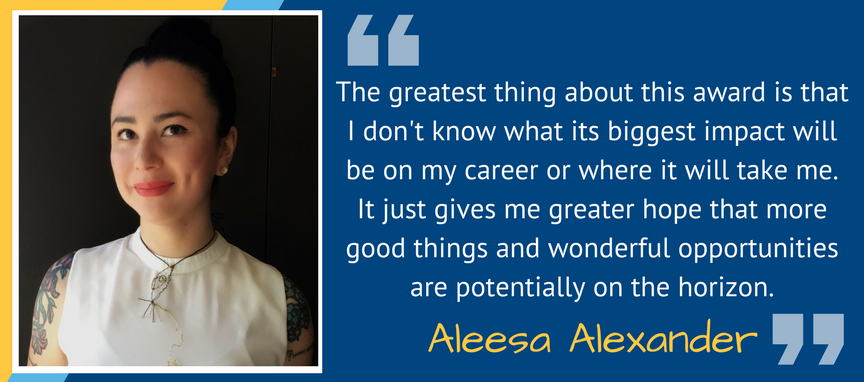Top Stories
Ph.D. candidate Aleesa Alexander will spend a year at the Metropolitan Museum of Art to work on her dissertation, "Unaccountable Modernisms: The Black Arts of Post-Civil Rights Alabama." She chats with us about her research, why she chose UCSB, and her future plans.


Aleesa Pitchamarn Alexander, a Ph.D. Candidate in the History of Art & Architecture Department at UCSB, was recently awarded a Jane and Morgan Whitney Fellowship at the Metropolitan Museum of Art in New York. This 12-month residential fellowship is hosted by the Modern and Contemporary Art Department to support research for her dissertation, "Unaccountable Modernisms: The Black Arts of Post-Civil Rights Alabama."
We caught up with Aleesa to discuss her âresearch plans, why she chose UCSB, and what she hopes to accomplish after receiving her Ph.D.
WHAT THE AWARD MEANS TO HERWhen I received my notice of acceptance I was beyond excited. It's the Met! It's New York City! It's me (hopefully) finishing my dissertation! I get one solid year to devote all of my time and energy towards the completion of my dissertation, in the most intellectually and culturally desirable setting imaginable. The greatest thing about this award is that I don't know what its biggest impact will be on my career or where it will take me. It just gives me greater hope that more good things and wonderful opportunities are potentially on the horizon. |
|
WHAT SHE IS LOOKING FORWARD TOBeyond being one of the largest art institutions in the world, one thing that makes the Met unique among museums is how much it values research and the production of it. The Met brings in fellows from all over the world, at all stages of their careers, working in all areas of history. I get to be a part of a community of scholars, curators, and museum professionals and, most importantly, learn from them. I am most excited about a 2018 Met exhibition that features the work of artists I happen to be writing about for my dissertation: Thornton Dial, Lonnie Holley, Joe Minter, the Quilters of Gee's Bend, and many more. Though I've seen more and more exhibitions of Southern black modern and contemporary art in recent years, I've never been able to be a part of them. This art is finally getting the attention it deserves and I can't wait to see how everything is going to come together. |
|
ABOUT HER AWARD-WINNING RESEARCHLike any other Ph.D. student, when I was looking for a dissertation topic I obviously wanted to find something that not only excited me but that also felt important, meaningful, and necessary. For me, âthat meant focusing on the artistic production of the Black South because there is still so much research that needs to be done in this area. So much of this art is steeped in oral tradition and was (in many senses of the word) invisible, as African American cultural production has been systematically oppressed since the very founding of this country. I am not always able to find archival evidence and paper trails to help my research, so sometimes I have to make do with what I have. On the other hand, because some of these artists are still living, I do get to actually work with them. Getting to know these artists, like Lonnie Holley, is probably my favorite part. I've learned so much - about art, history, human experience, modes of expression and representation - that I never could have just gleaned out of a book. |
|
WHY UCSB?The Department of the History of Art and Architecture at UCSB seemed more open to a variety of research topics and less conservative than other doctoral art history programs. Not every art history program would be as accepting or open to a topic such as mine - not everyone sees the value in studying formally untrained artists, who make work that is visually challenging and certainly not traditionally "beautiful." The scholarly environment at UCSB was also quite collegial and welcoming when I came and visited as a prospective student. This was important to me, because I had heard horror stories about hyper-competitive Ph.D. programs where the atmosphere was cutthroat and cold. I knew that wasn't for me. And thankfully, my initial impression turned out to be true. |
|
FUTURE PLANSAfter graduate school, my hope would be to secure either an academic or museum position in Los Angeles. My partner (who also got his Ph.D. at UCSB) recently transitioned out of academia into a wonderful position at a private research organization. We both grew to love LA during our time at UCSB. Beyond the city's obvious positives, the art scene is varied, exciting, and very diverse. I would love to find a way to bring my research to Southern California in a meaningful way. |
Congratulations, Aleesa!
